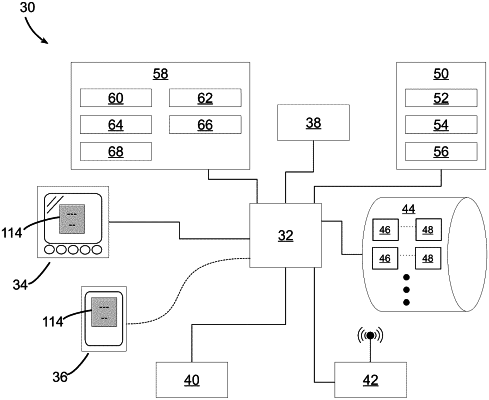| CPC B60W 50/14 (2013.01) [B60W 40/06 (2013.01); B60W 40/13 (2013.01); G01C 21/3469 (2013.01); G01G 19/08 (2013.01); G07C 5/008 (2013.01); G07C 5/0808 (2013.01); B60W 2050/146 (2013.01); B60W 2556/60 (2020.02)] | 20 Claims |

|
1. A method for classifying a weight of a vehicle, the method comprising:
monitoring a vehicle weight;
determining a change in the vehicle weight;
comparing the change in the vehicle weight to a first predefined weight change threshold;
categorizing the change in the vehicle weight in response to determining that the change in the vehicle weight exceeds the first predefined weight change threshold, wherein the change in the vehicle weight is categorized as an occupant weight change or a cargo weight change;
determining a key-state of the vehicle, wherein the key-state includes a key-on state and a key-off state;
determining an elapsed key-off time that the vehicle has been in the key-off state in response to determining that the change in the vehicle weight exceeds the first predefined weight change threshold, and that vehicle is in a key-off state;
comparing the elapsed key-off time to a predefined elapsed key-off time threshold;
performing a first action in response to determining that the elapsed key-off time has exceeded the predefined elapsed key-off time threshold and that the change in vehicle weight exceeds the first predefined weight change threshold;
determining a door position of a cargo compartment of the vehicle in response to determining that the change in the vehicle weight exceeds the first predefined weight change threshold, wherein the door position of the cargo compartment includes an open position and a closed position;
comparing the change in the vehicle weight to a second predefined weight change threshold in response to determining that the cargo compartment of the vehicle is in the open position;
performing a second action in response to determining that the change in the vehicle weight exceeds the second predefined weight change threshold, and that the cargo compartment of the vehicle is in the open position;
optimizing a route to a destination based at least on the change in the vehicle weight; and
displaying the optimized route to the destination using a Human Machine Interface (HMI) of the vehicle.
|